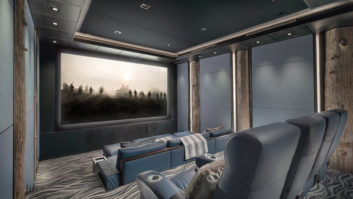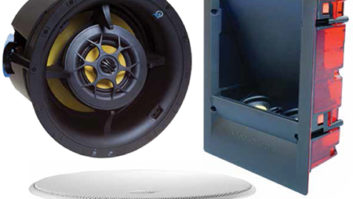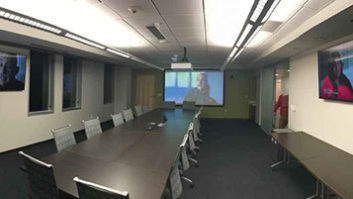Modern Social Scenes Call for New-Age Entertainment Areas

Anthony Grimani ([email protected]) is president of Performance Media Industries, with offices in Novato and San Anselmo, California.
I am detecting a trend of late; people are increasingly choosing to move their big flat-screen TVs and associated technology into areas that are separate from the living room, thus reclaiming the hub of their family and friends meeting space. That’s good news for us.
Dedicated home theaters–complete with big projection screens, powerful sound systems, dark look and feel, and theater-style seating–have long been considered the ideal environment for a home entertainment experience. Many of us continue to champion their cause and encourage clients to opt for them whenever possible. The fact remains, however that some clients just won’t go for this approach, even when it’s correctly presented and promoted.
Many people don’t feel that “cinematic” entertainment is a big part of their lives. Others don’t want to commit the resources of money and space required. Still others may have entertainment interests not ideally suited to the typical dedicated home theater. In cases like this, the traditional course of action has been to install a big TV and small speaker system in a more centralized living area, such as the living room. It provides the client something more than he/she can get at Best Buy, and the electronic systems contractor gets a sale. Everyone’s happy, right? Apparently not.
In my experience, a new approach is evolving. The TV and speakers are no longer being installed in the living room. Rather, they are given a separate area to call their own. It’s like a hybrid between the living room system and a dedicated theater–inspired by both but like neither. These areas are separated from the living room (sometimes by arches or cased openings and sometimes by a separate room), but they are always adjacent or extremely close by. The room environment is better optimized for sound and picture than a living room, but not nearly as tightly controlled as a dedicated theater. For example, the room may have a window, but it’s positioned to have little impact on the screen and has some form of light control. Acoustic treatment is present, but not in such quantities as are used in a dedicated theater. The screen is bigger than a living room, but not cinematic size. It may be a big TV or a small projector, depending on how well light is controlled. The sound system is more substantial than typical in-walls, but it doesn’t fulfill the thunderous requirements of reference level. The seating optimizes acoustics and viewing comfort, but the furniture consists of comfy loungers and sofas instead of regimented, theater-style seating that all faces the screen. The décor is more entertainment-oriented (like exposed libraries of movies, games or music) than a living room, but not outlandishly themed like some dedicated theaters. These spaces really are media rooms; not just living rooms or family rooms with a big TV and loud sound.

Lately, the author is noticing that TVs and speakers are no longer being installed in the living room. Rather, they are given a separate area to call their own. It’s like a hybrid between the living room system and a dedicated theater– inspired by both but like neither.
Why is this happening? I think people are reacting to the ever-larger TV screen being the center of attention where they socialize with friends and family. Let’s face it, if you sit down in the den to chat and the TV is on, everyone will inevitably end up watching it. It really doesn’t matter what is on. You can’t just eliminate the TV as a source of aural and environmental pollution, because part of the crowd may want to watch something while the others talk. Dedicated theaters don’t work, because the “watchers” will trek off to find the theater, never to be seen or heard from again until it is time to leave. However, if the “watchers” just step into the next room, you keep everyone together without distracting the “non-watchers.”
I also give credit to the evolution of our entertainment technology. It used to be that sitting down to watch a movie, listen to music, post on Facebook, or play a game required separate devices and program material that might not even be in the same room. That’s no longer the case. My professional nerd of a tech editor, Chase, recently described a scenario where he was updating his Facebook page while watching Inception, downloaded from Zune, when an invitation popped up from his clan to play “Call of Duty: Black Ops.” With a couple of button-presses, he was playing the game with voice chat while streaming a Pearl Jam concert from his computer over the game audio. It makes me tired just thinking about that, but it shows how integrated our forms of entertainment have become. He did all of that with one device, and it required no special effort. With this kind of flexibility at our fingertips, it’s no wonder that people are looking for rooms that have more technology than a big TV with speakers but are more lounge-friendly than a dedicated theater.
When you encounter clients who don’t want a dedicated home theater, don’t give up and install something diminutive in the living room. Discuss this new type of media room with them. They get a more affordable, more integrated environment that meets the needs of today’s evolving entertainment but doesn’t detract from the social aspects of the home. You get to sell and install most of the juicier parts of a dedicated theater without such hassles as where to run water pipes, how to control the noise of HVAC systems, and how to build complex sound isolation.
Chase Walton contributed to this column.







